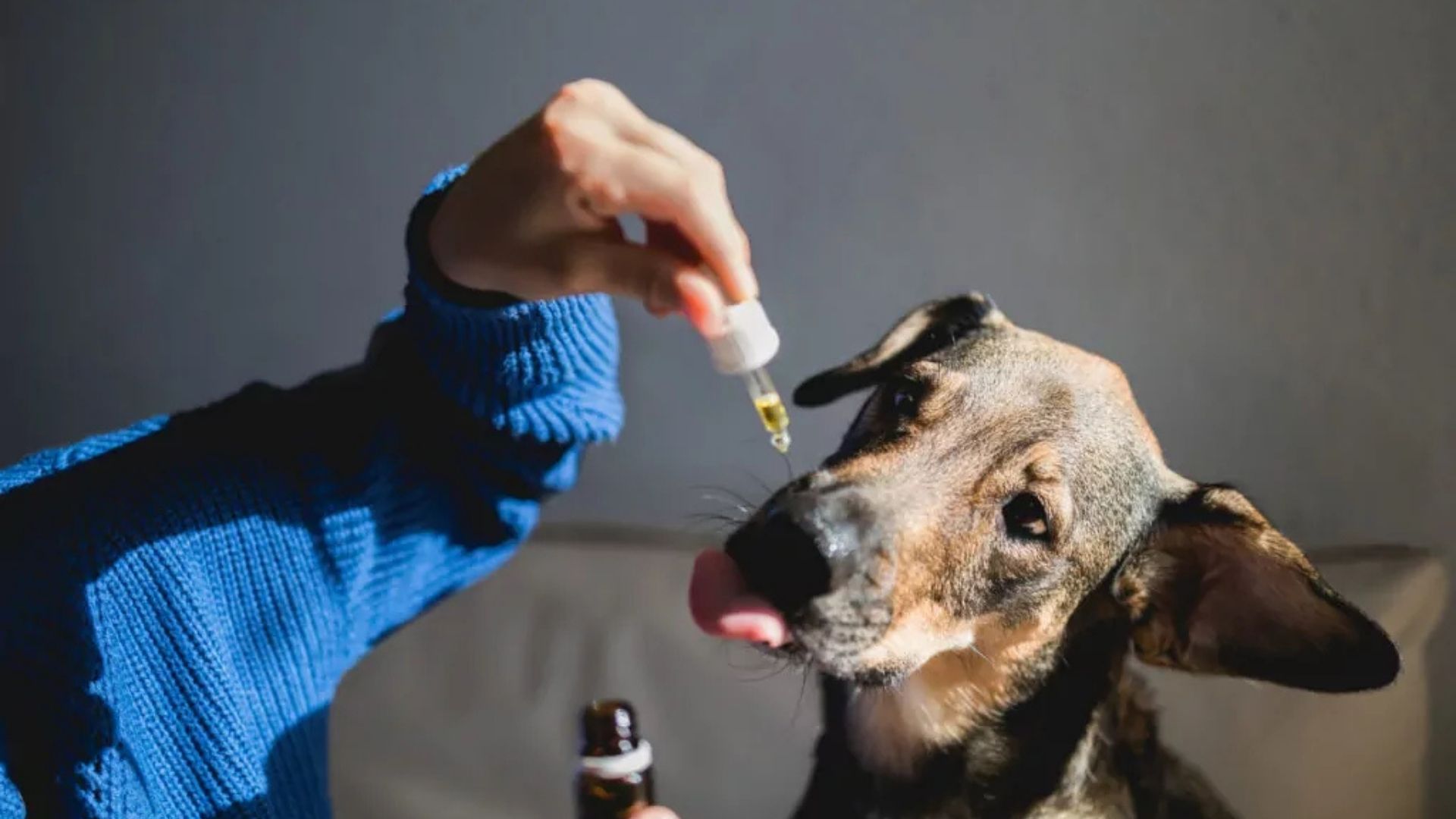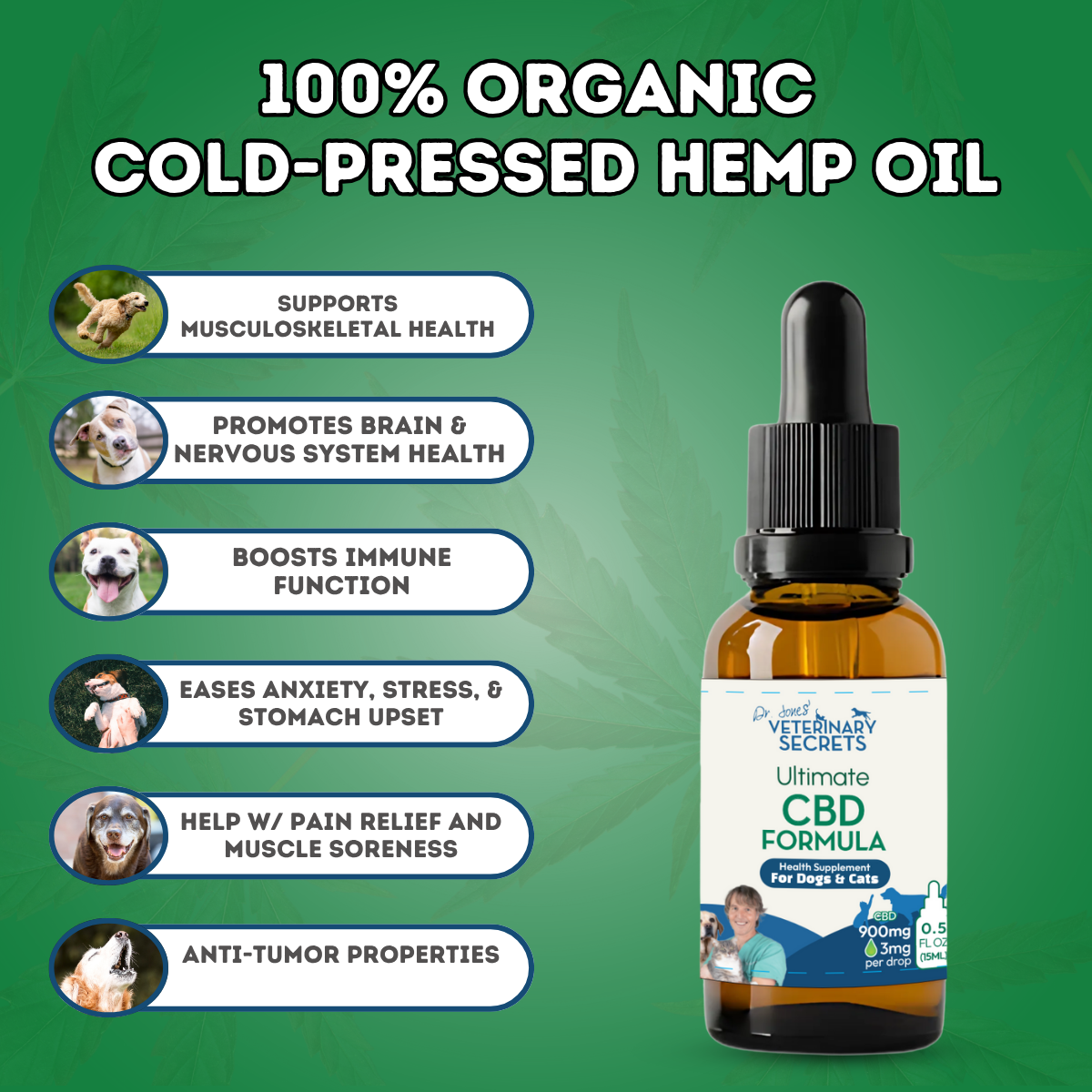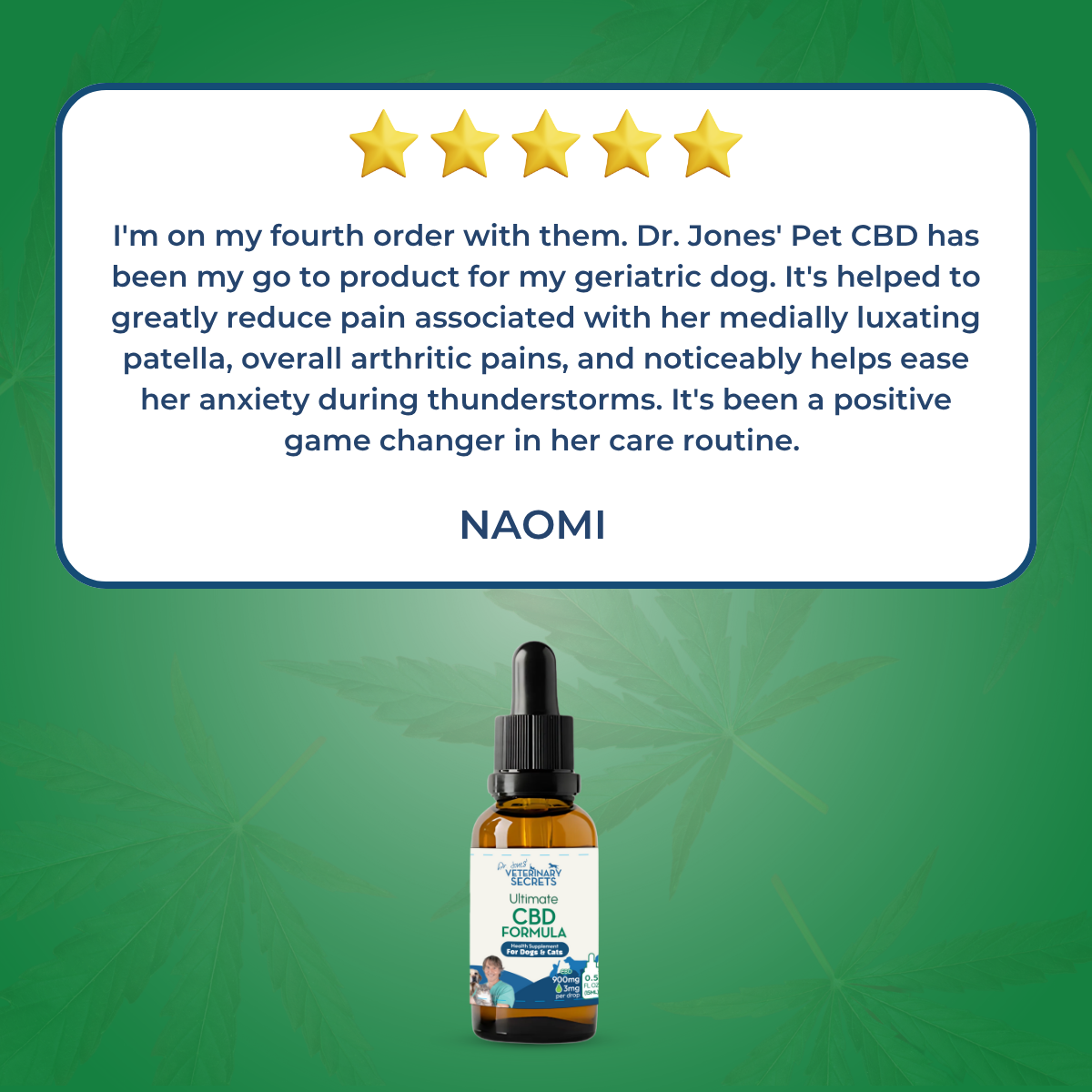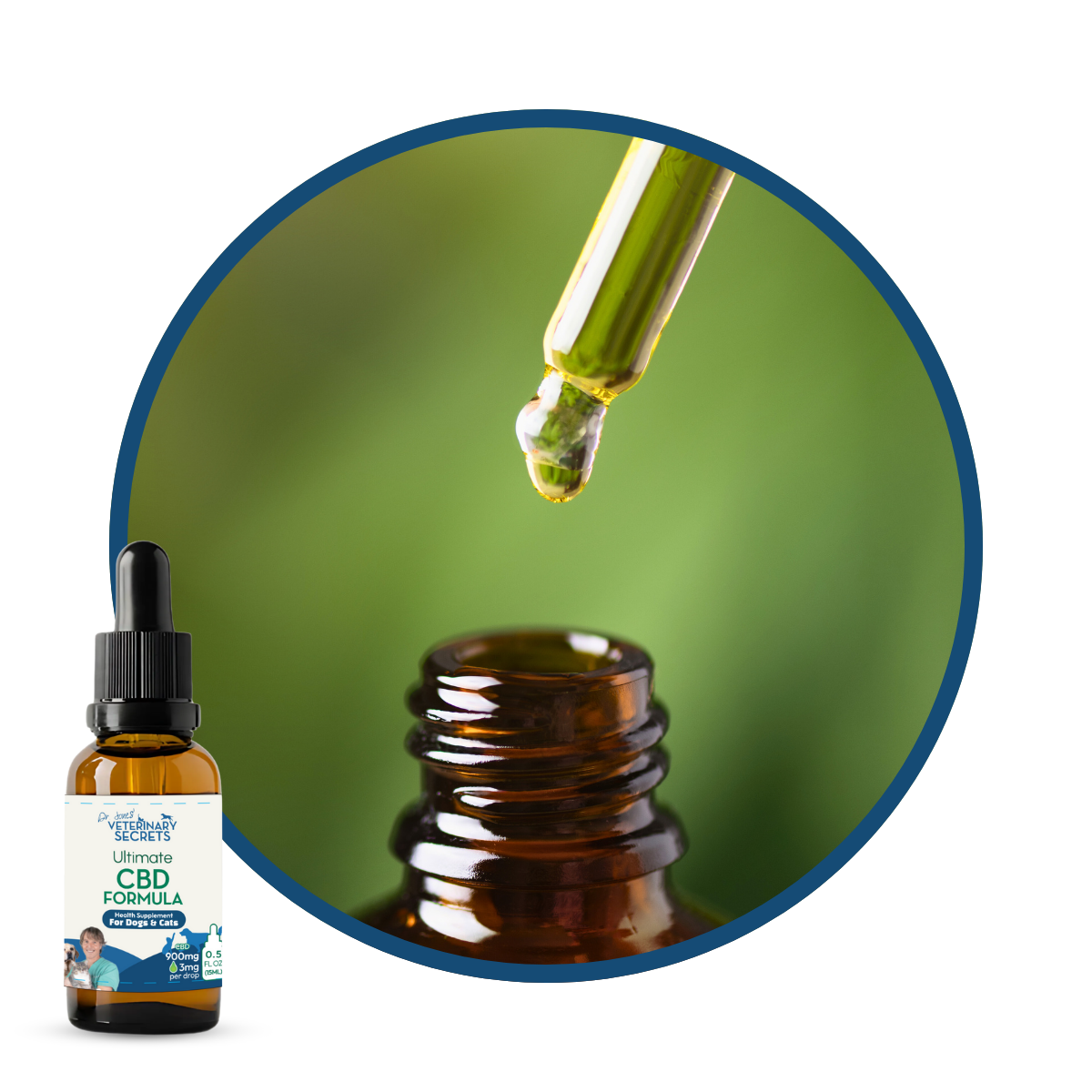What Science Now Says About Cannabis for Dogs & Cats (2025 Veterinary Update)
![]()
What Science Now Says About Cannabis for Dogs and Cats (2025 Update)
If you have not tried cannabinoids to help your dog or cat, it is worth a serious look. There are many new studies. Thousands of clinicians are using cannabinoid products in practice, and pet parents are seeing real benefits.
I just came back from the Real Pet Summit on dog health and nutrition. I spoke on a guest panel and listened to several excellent talks. One that stood out was by Dr. Trina Hazzah, a respected veterinary oncologist and president of the Veterinary Cannabis Society. She shared what is new in veterinary cannabis. Here is my updated guide, what I learned, and how I use these tools with animals.
Support Calm, Comfort, and Well-Being with Dr. Jones’ Ultimate CBD Formula
Help your dog or cat feel their best with Dr. Jones’ Ultimate CBD Formula, a clean, whole-plant extract designed to support stress relief, joint comfort, healthy inflammation response, and overall wellness. Each drop delivers a measured amount of CBD from a tested, toxin-free blend that includes naturally occurring cannabinoids and beneficial plant compounds. It’s simple to use, easy to dose, and ideal for pets who need calm, comfort, or everyday support. Perfect for anxious pets, aging animals, and those recovering from illness or injury.
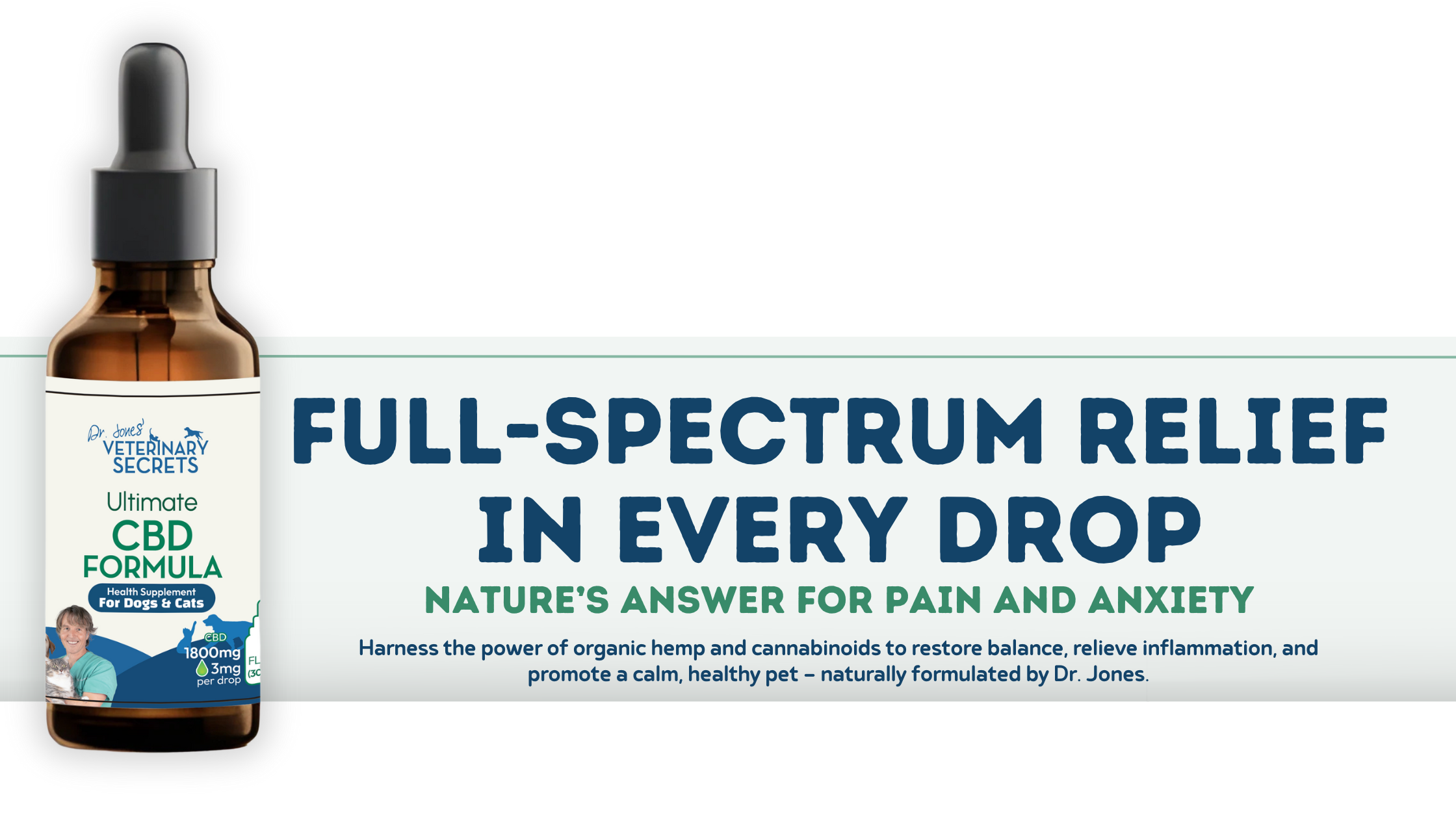

Whole-Plant Matters: What Is In Cannabis
A quality whole-plant cannabis extract contains hundreds of compounds that work together.
The key groups

-
Cannabinoids: CBD, THC, CBG, CBN, CBC.
-
CBD attaches to and modulates CB1 and CB2 receptor pathways. It is the most studied and widely useful compound.
-
THC is psychoactive and also medicinal. Some blends use a 1:1 profile. I have used a 50:50 THC:CBD blend for palliative pain.
-
-
Terpenes: the aromatic oils you smell when you open a tincture.
-
Examples: limonene (also in lemon), pinene (related to pine). Many have antimicrobial, antiviral, anti-inflammatory and potential anticancer actions.
-
-
Flavonoids: plant antioxidants such as quercetin, kaempferol, apigenin, and cannabis-specific cannflavins.
-
Quercetin helps many allergic animals and supports healthy aging through cellular cleanup pathways.
-
The takeaway is simple. Whole-plant extracts provide more than CBD alone. You get cannabinoids, terpenes, and flavonoids that can complement each other.
Natural Allergy and Inflammation Support with Dr. Jones’ Ultimate BioActive Quercetin
Give your pet powerful relief with Dr. Jones’ Ultimate BioActive Quercetin, a highly absorbable form of one of nature’s best antihistamines. This formula helps calm itching, reduce inflammation, and support immune balance using Quercetin sourced for superior bioavailability. It’s a safe, gentle option for dogs and cats with allergies, skin issues, or chronic inflammation, and can be used daily for long-term wellness. Ideal for pets who need natural, effective relief without the side effects of conventional drugs.

Where Cannabis Helps Most
1) Anxiety and stress
CBD can calm stressed pets. Cats with stress-linked urinary issues often improve when anxiety is addressed. Tula, my dog, is calmer on set when I give her a measured CBD dose before filming.
2) Pain and inflammation
I see benefits in arthritic dogs, spinal pain, and acute injuries such as ACL tears. Many pets move easier and rest better.
3) Seizures
High-quality evidence supports CBD for epilepsy in animals at appropriate doses. Some difficult cases need higher therapeutic ranges.
4) Allergies and skin inflammation
CBD’s anti-inflammatory action helps many allergic pets. I also like pairing it with quercetin for additional relief.
5) Cancer care and palliative support
My late dog Lewis had invasive oral cancer. Standard pain control did not help enough. A balanced THC:CBD blend finally gave him comfort and quality time.
Beyond comfort, clinicians report response in several cancers, including mast cell tumors. Mechanisms may include improved immune recognition, reduced new blood vessel growth, and direct cancer-cell targeting when receptors are present.
Safety, Side Effects, and Interactions
Dr. Hazzah’s guidance aligns with what I see.
-
Generally safe across many conditions when dosed correctly.
-
Use caution in serious advanced heart disease with blood-pressure concerns and in acute liver failure.
-
Mild or moderate enzyme elevations are not an automatic stop.
-
-
Dogs on CBD may show an increase in ALP. This can reflect bone activity and is not always liver damage.
-
Cats can sometimes show a rise in ALT. Work with your clinician, check values, and adjust the dose if needed.
-
Drug interactions are uncommon at appropriate doses. Monitor and introduce gradually.
Dosing Guide I Use and Teach
CBD starting dose: about 1 mg per kg of body weight daily.
-
Example: a 5 kg cat gets 5 mg CBD per day.
-
If your tincture has 3 mg per drop, that is roughly 2 drops daily.
For refractory epilepsy or cancer: titrate up to 15 mg per kg as needed and tolerated.
-
A 5 kg cat may reach 75 mg CBD daily, which equals about 25 drops at 3 mg per drop.
-
Increase slowly. Watch response and labs.
THC: helpful for nausea and appetite in cancer care.
-
Keep total daily THC modest. Target 30 to 60 mg total in larger patients only when appropriate and with professional guidance.
How to give it
-
Give with food or fat to improve absorption.
-
Topical CBD can be tried for localized mast cell tumors that have not spread, based on clinical reports.
Quality Checklist Before You Buy
Not all products are equal. Choose carefully.
-
Whole-plant extract with cannabinoids, terpenes, and flavonoids.
-
Certificate of Analysis for every batch.
-
Solvent-free extraction and heavy-metal testing.
-
Clear CBD and THC per drop for accurate dosing.
-
Prefer products with professional oversight and transparent sourcing.
I use and recommend products that meet these standards. Our CBD and our broader cannabinoid blend are whole-plant, tested, and labeled clearly so you can dose with confidence.
Quick Start Plan
-
Identify the primary goal: anxiety, pain, seizures, allergy relief, cancer support.
-
Start CBD at 1 mg/kg daily.
-
Recheck in 7 to 14 days. If not improved, titrate upward carefully.
-
For cancer or refractory epilepsy, consider the higher therapeutic range up to 15 mg/kg with monitoring.
-
Add THC for appetite and nausea support when appropriate. Keep THC conservative.
-
Give with food or healthy fat.
-
Use topical CBD on suitable localized skin tumors if advised.
-
Share the Veterinary Cannabis Society resources with your clinician for current review papers and dosing references.
Final Thoughts
Cannabis is not a cure-all. It is a useful tool that can lower stress, ease pain, support seizure control, help allergic pets, and improve comfort in cancer care. With sane dosing, good monitoring, and a clean product, the risk profile is favorable.
If your dog or cat faces any of these challenges, consider a whole-plant CBD or cannabinoid blend that meets strict quality standards. Use the dosing plan above, give it with food, and adjust based on how your pet feels.
Subscribe to Veterinary Secrets for more practical updates. Click the link in the description to get my free book, Heal Your Pet At Home.
Click To Get A Free Copy of My E-Book!

Stay Connected with Dr. Andrew Jones DVM:
- Visit our website: https://veterinarysecrets.com/
- Subscribe for more pet care tips: https://www.youtube.com/@VeterinarySecrets
- Facebook: http://facebook.com/veterinarysecrets
- Instagram: http://instagram.com/veterinarysecrets
- Twitter: http://twitter.com/dogandcatdoc
- Pinterest: http://pinterest.com/veterinarysecrets
- Podcast: http://vetsecrets.podbean.com/
If you’re curious about natural pet health and wellness, you’re in the right place. Let’s dig in.




